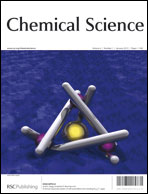Quantum chemical electronic structure calculations were employed to investigate the nature of the low-lying excited states of [n]cycloparaphenylenes ([n]CPPs) and the role of static and dynamic geometrical distortions in the bright states. The lowest-energy bright states involve single-electron excitations from S0 ground state to S2 and S3 states, which are at the Franck–Condon geometry the two components of a twofold degenerate 1E state. They couple to a twofold degenerate e vibration which induces Jahn–Teller (JT) deformation of the CPP geometry from circular to oval shape. Non-radiative decay from the S2/S3 states to the ground S0 and first excited, dark S1 states is suppressed due to symmetry rules. The emission spectral features in CPPs with large number of phenylene units n can therefore largely be attributed to the E⊗e JT system associated with S2 and S3. However, absorption and emission energies computed at the respective S0 and S2/S3 minimum energy geometries are found to be nearly identical, independent of the molecular size n in the CPP molecules. In contrast, molecular dynamics simulations performed on the excited state potential surfaces are able to explain the experimentally observed fluorescence blueshift of the strongest emission peaks with increasing molecular size. This unusual feature turns out to be a consequence of large vibrational amplitudes in small [n]CPPs, causing greater Stokes shifts, while large [n]CPPs are more rigid and therefore feature smaller Stokes shifts (“dynamic blueshift”). For the same reasons, symmetry rules are violated to a greater extent in small [n]CPPs, and it is expected that in their case a “static blueshift” due to emission from S1 contributes in the fluorescence spectra.
![Graphical abstract: Origin of the size-dependent fluorescence blueshift in [n]cycloparaphenylenes](/en/Image/Get?imageInfo.ImageType=GA&imageInfo.ImageIdentifier.ManuscriptID=C2SC20878D&imageInfo.ImageIdentifier.Year=2013)
You have access to this article
 Please wait while we load your content...
Something went wrong. Try again?
Please wait while we load your content...
Something went wrong. Try again?
![Graphical abstract: Origin of the size-dependent fluorescence blueshift in [n]cycloparaphenylenes](/en/Image/Get?imageInfo.ImageType=GA&imageInfo.ImageIdentifier.ManuscriptID=C2SC20878D&imageInfo.ImageIdentifier.Year=2013)

 Please wait while we load your content...
Please wait while we load your content...